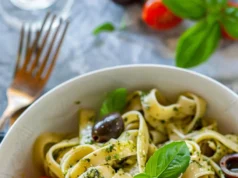
The Sazerac is America’s oldest known cocktail, born nearly two centuries ago in the vibrant streets of New Orleans. Unlike many classic drinks that have evolved over time, the Sazerac has retained its original charm and complexity, captivating bartenders and cocktail enthusiasts alike. However, crafting the perfect Sazerac requires more than just following a recipe. It demands precise technique, carefully chosen ingredients, and attention to detail—elements that many home bartenders often overlook. This guide reveals expert insights and time-tested methods to help you create a Sazerac just like those served in New Orleans’ finest establishments.
The Story Behind the Sazerac
Birth in a New Orleans Apothecary
In 1838, Creole apothecary Antoine Peychaud made history when he began mixing drinks in his Royal Street shop. From his modest establishment at 437 Royal Street, he created a unique blend that would lay the foundation for the Sazerac.
Following the early 19th-century cocktail formula of spirits, sugar, water, and bitters, Peychaud’s signature addition was his own aromatic bitters, rich in aniseed and gentian. According to historical accounts, he served his creation in an egg cup, or coquetier in French—a term some believe later evolved into “cocktail.”
The drink took its name from Peychaud’s preferred French brandy, Sazerac-de-Forge et Fils. By 1850, the Merchants Exchange Coffee House had transformed into the Sazerac House, the go-to destination for what was then called the “Sazerac Cocktail.”
Evolution from Cognac to Rye
A pivotal change occurred in the 1870s when the phylloxera epidemic devastated French vineyards, disrupting cognac production. Forced to adapt, New Orleans bartenders turned to American rye whiskey, which altered the cocktail’s flavor profile but kept its essence intact.
Thomas H. Handy, who acquired the rights to Peychaud’s Bitters in 1873, played a significant role in shaping the modern Sazerac. By 1890, his company controlled both the Sazerac brandy imports and the production of Peychaud’s Bitters.
Another key addition was absinthe, which introduced a layer of complexity to balance the boldness of rye. The recipe received its first official documentation in 1908 in William T. Boothby’s The World’s Drinks and How to Mix Them.
Despite these transformations, the Sazerac remained New Orleans’ signature drink, eventually earning the title of the city’s official cocktail in 2008.
Essential Tools and Ingredients
Crafting an authentic Sazerac requires specific ingredients and tools, each playing a crucial role in achieving the perfect balance.
Choosing the Right Rye Whiskey
The whiskey forms the backbone of a Sazerac, making your selection essential. A few standout choices include:
- Old Overholt – A lighter, versatile option for a well-balanced cocktail.
- Sazerac Rye – Offers warm spices, vanilla, and peppermint notes.
- Rittenhouse Rye – Features chocolate and dark spice with a higher ABV.
- Wild Turkey Rye – Known for its caraway and black pepper notes, great for beginners.
- Michter’s US*1 – Delivers butterscotch and holiday spice flavors.
You May Also Like: German Casserole Recipe: Easy, Hearty, and Delicious
Understanding Bitters
Peychaud’s Bitters are non-negotiable in a proper Sazerac. Their bright, anise-forward profile is integral to the cocktail’s flavor. Some bartenders add a dash of Angostura bitters for extra depth, but Peychaud’s remains the star.
Proper Glassware Selection
A traditional Old-Fashioned glass is essential for serving a Sazerac. Unlike a cocktail glass, which constricts aromas, an Old-Fashioned glass provides room for the drink to breathe. Serving it neat (without ice) preserves the intended experience.
Mastering the Basic Technique
A great Sazerac is all about technique. Every step, from the absinthe rinse to the perfect balance of sugar and bitters, plays a crucial role.
The Perfect Absinthe Rinse
Absinthe sets the aromatic foundation for a Sazerac. Here’s how to do it right:
- Pour ¼ ounce of absinthe into a chilled Old-Fashioned glass.
- Swirl the absinthe to coat the interior, then discard the excess.
Using proper absinthe instead of Pernod ensures the right balance—Pernod’s sweetness can interfere with the drink’s structure.
Balancing Sugar and Bitters
The sugar and bitters combination defines the Sazerac’s character.
- Place one sugar cube in a mixing glass.
- Add three dashes of Peychaud’s Bitters.
- Muddle thoroughly to dissolve the sugar.
For convenience, many bars substitute a simple syrup without compromising quality.
Stirring to Perfection
- Add 1.5 ounces of rye whiskey to the bitters-sugar mixture.
- Add ice to the mixing glass and stir thoroughly.
- Strain the chilled mixture into the absinthe-rinsed glass.
This careful process ensures the flavors meld seamlessly, creating the smooth, balanced taste that defines a Sazerac.
Common Mistakes to Avoid
Even experienced bartenders make mistakes. Here’s what to watch out for:
Temperature Control Errors
- Always pre-chill your serving glass.
- Never serve a Sazerac over ice.
- Avoid using room-temperature ingredients.
Measuring Mishaps
- Overusing absinthe can overpower the drink. Stick to a light rinse.
- Excessive Peychaud’s Bitters can throw off the balance.
Improper Stirring Technique
- Never shake a Sazerac. Shaking aerates the drink and ruins its clarity.
- Stir just long enough for proper dilution—about 10 seconds.
Pro Tips for the Perfect Serve
Mastering the Ideal Serving Temperature
- Avoid freezing your glass, as extreme cold mutes flavors.
- Instead, fill the glass with ice while preparing the drink, then discard the ice.
The Art of Lemon Peel Expression
- Express the lemon peel over the drink from a distance of about 3–4 inches.
- Do not drop the peel into the glass. Instead, discard it after expression to maintain balance.
Conclusion
Crafting a flawless Sazerac is both an art and a science. While the cocktail has evolved since Antoine Peychaud’s time, its essence remains unchanged—meticulous technique, high-quality ingredients, and precise execution.
Mastering each step, from the absinthe rinse to the final lemon expression, ensures your Sazerac mirrors those served in New Orleans’ top bars. With patience and practice, you’ll perfect this legendary cocktail, sip by sip.







